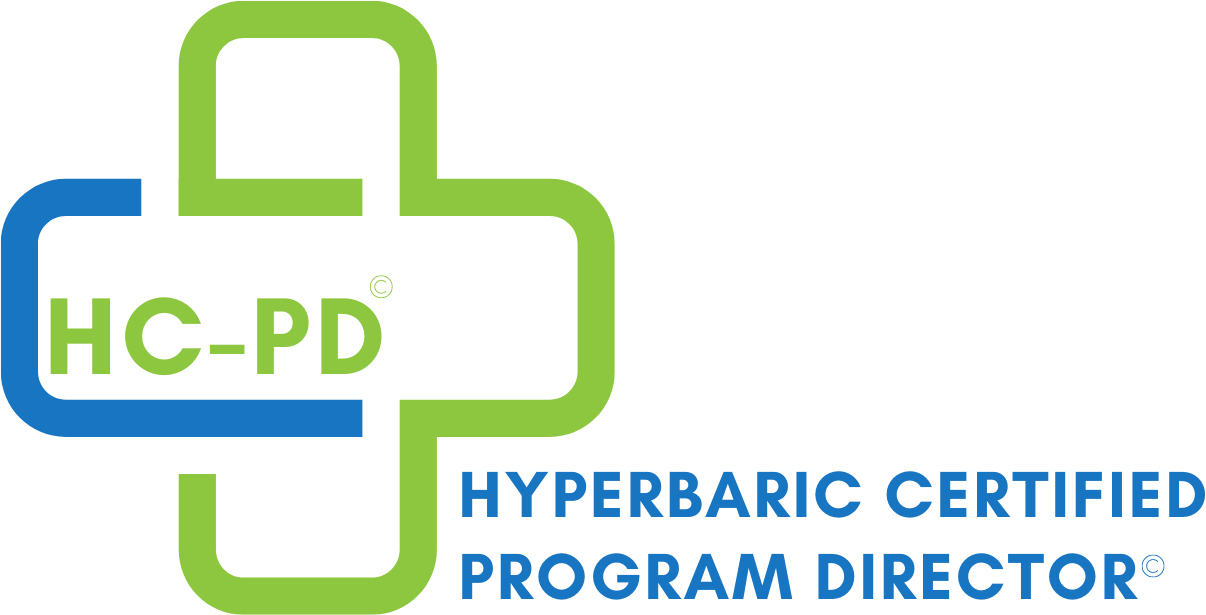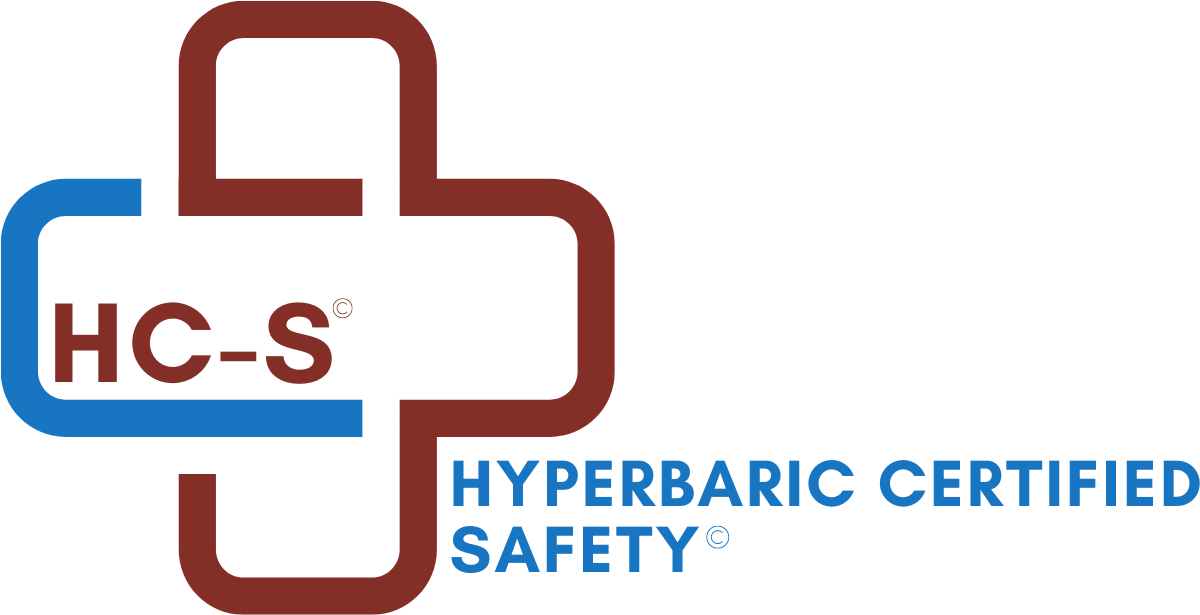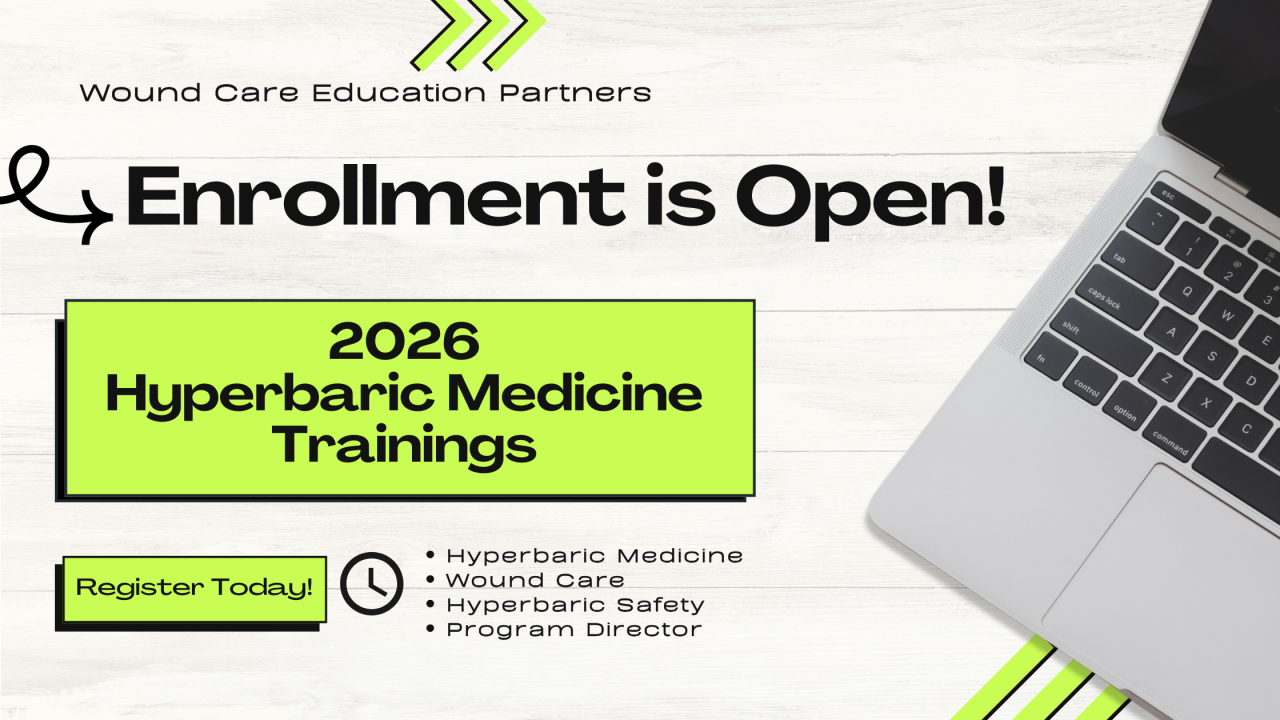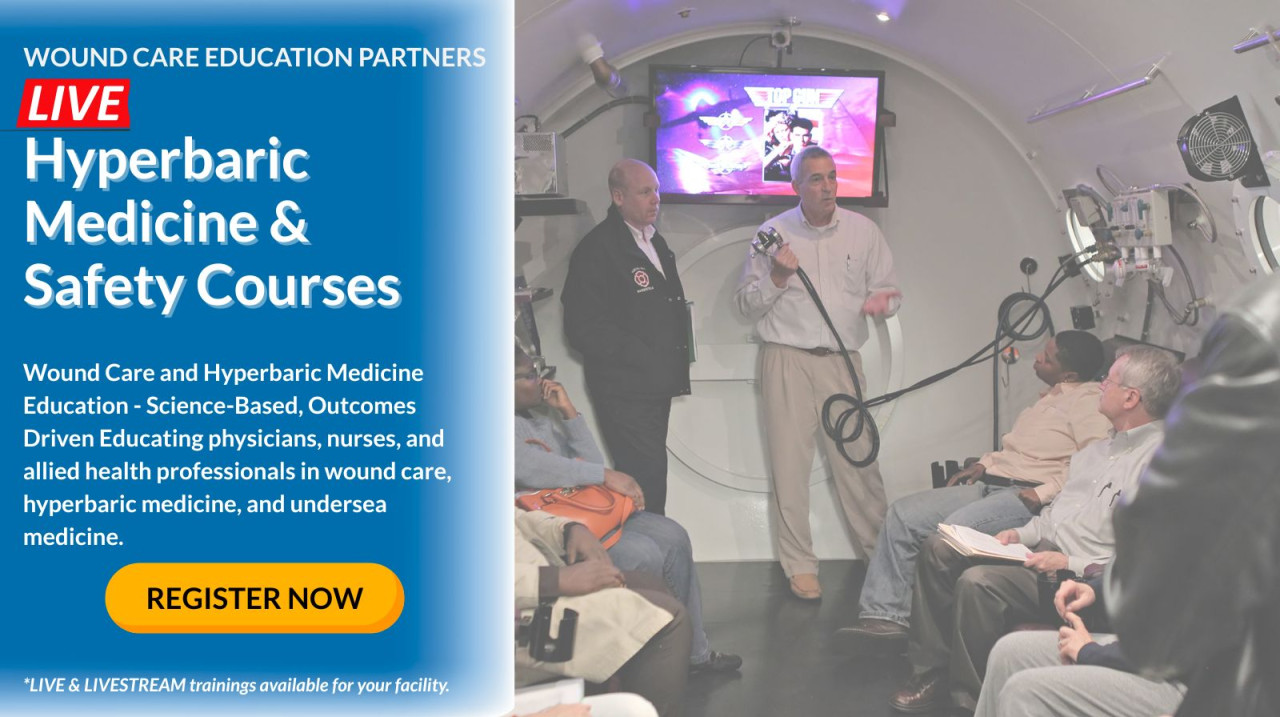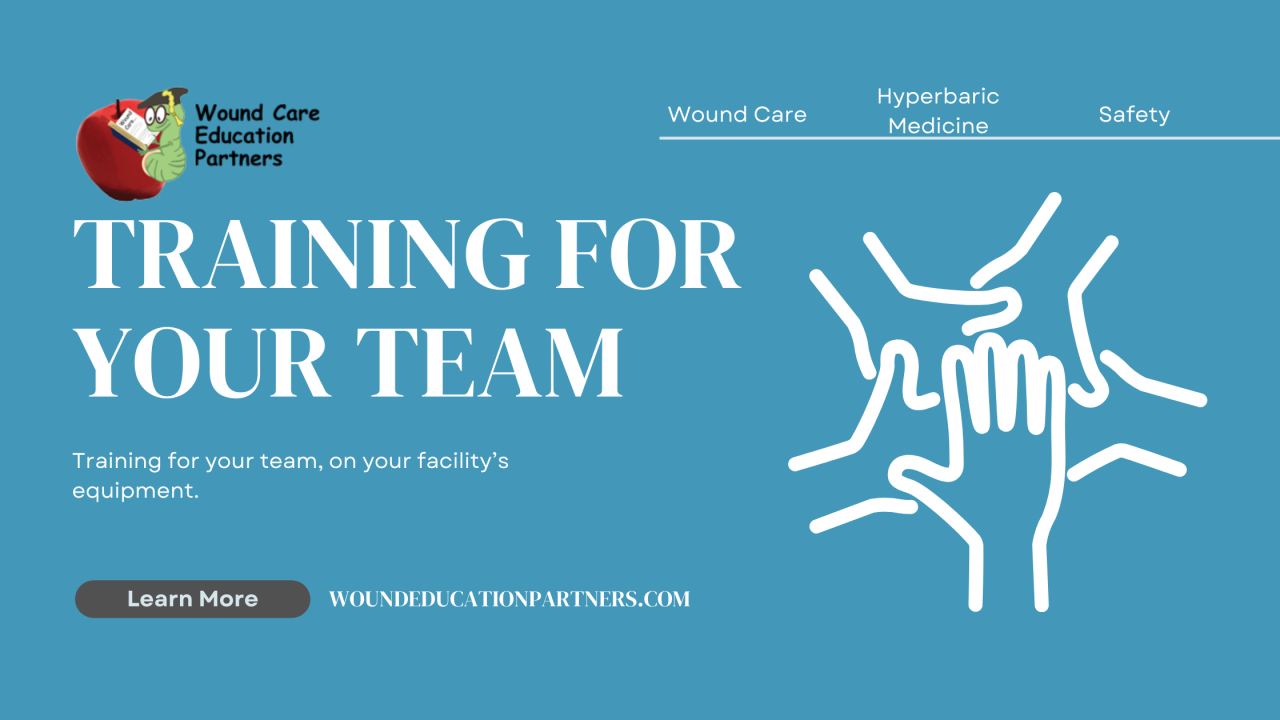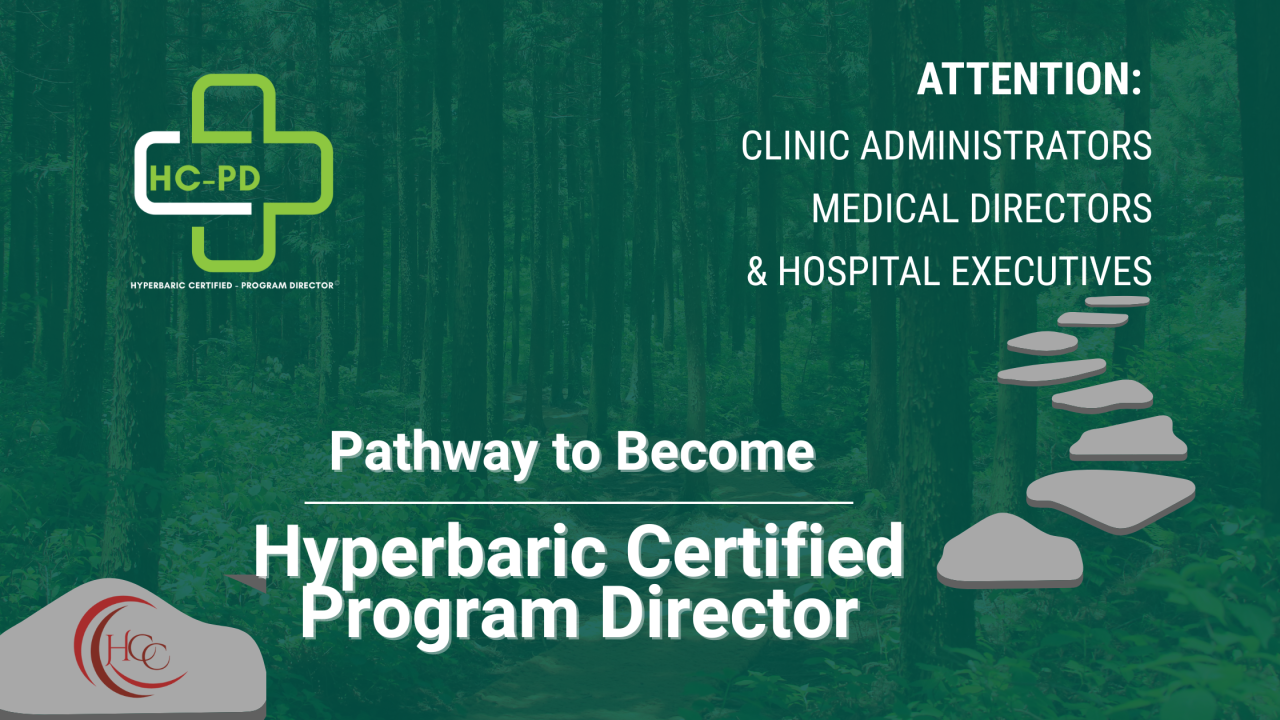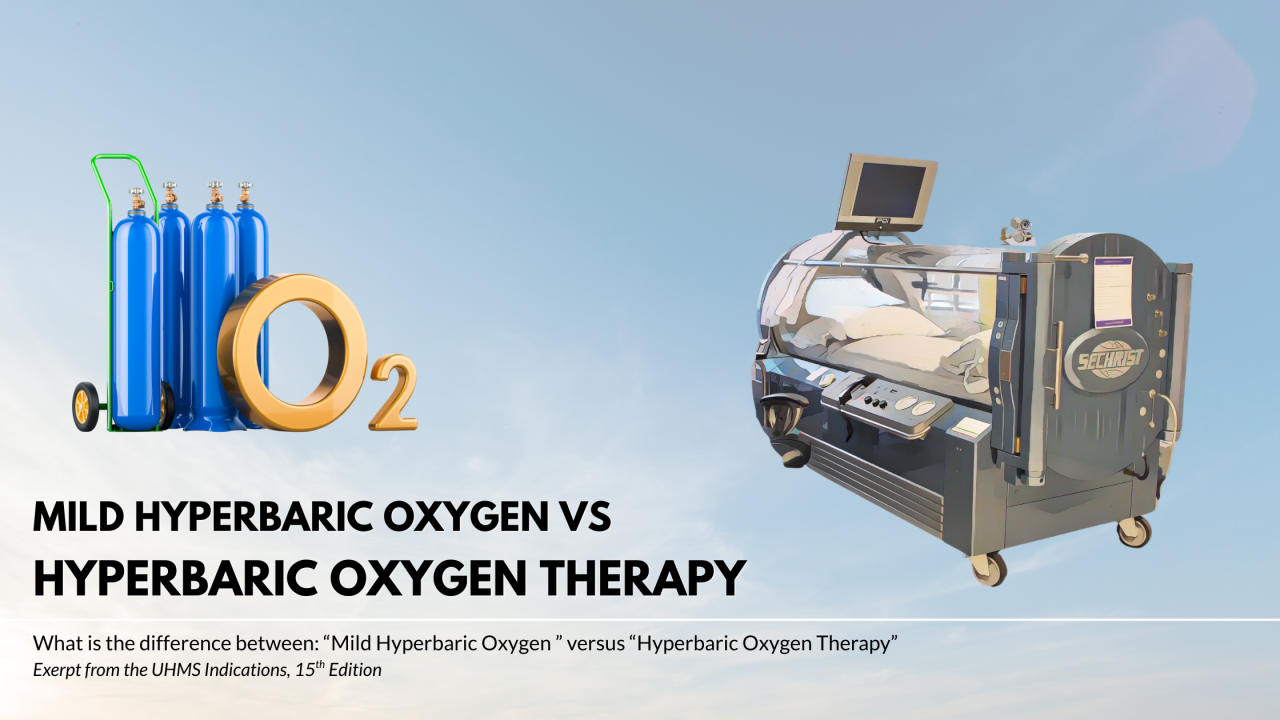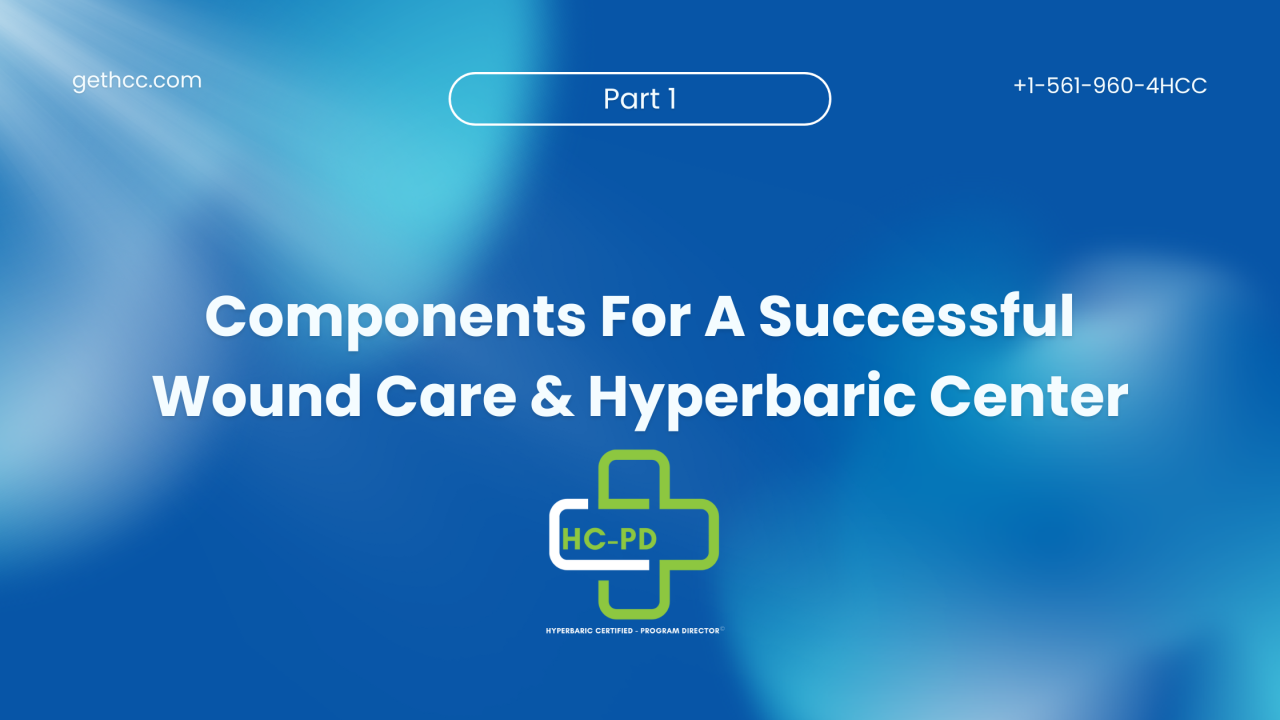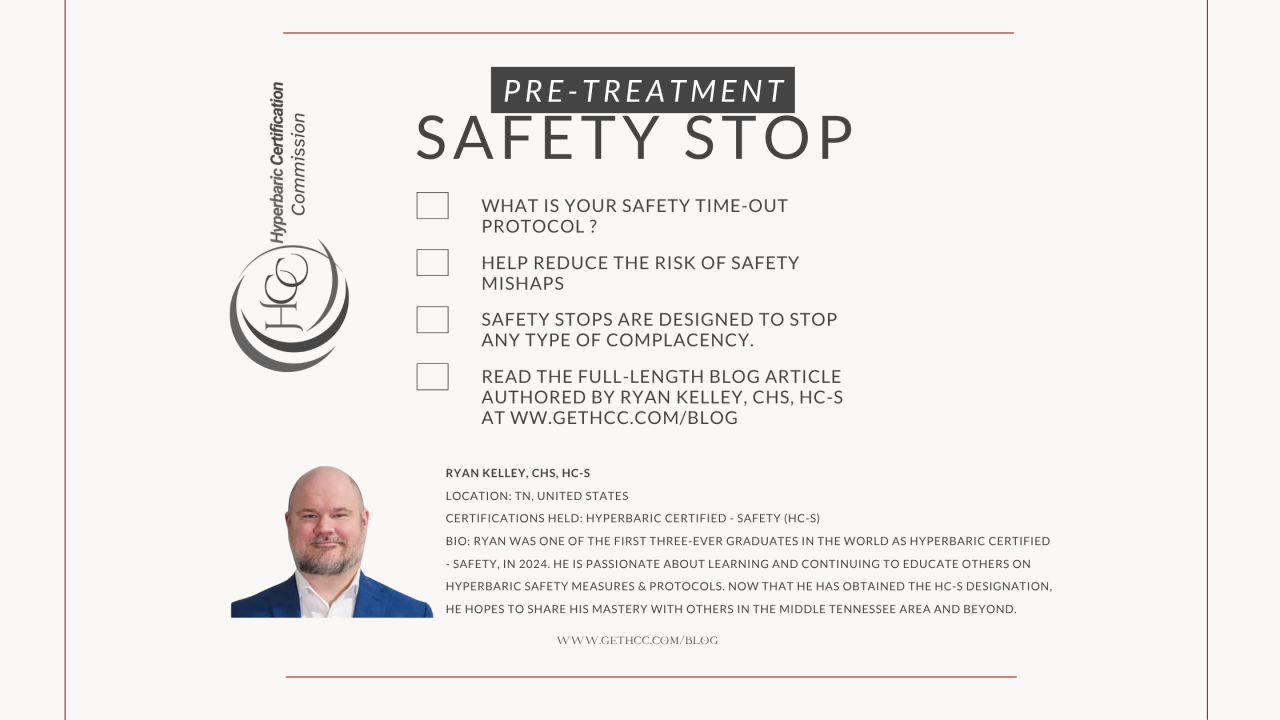2026 Training Course Enrollment is open!
- Hyperbaric Medicine Basic Training
- Wound Care Certification Basic Training
- Hyperbaric Safety Training
- Program Director Training
Rx Pad
There are many the benefits of training your team at your facility. Talk to us about creating hybrid learning opportunities combining the ease of livestream and the practical, hands-on learning component of in-person.
Earn 12+ Hyperbaric CME, CEU Hours
Are you looking for hyperbaric-specific CME, CEUs in order to complete your recertification or to fulfill your CME, CEU requirements for hyperbarics?
Physician CME (as per the UHMS Guidelines for Hyperbaric Facility Operations):
"For an initial appointment or reappointment, physicians must complete at least twelve (12) hours of hyperbaric medicine-specific AMA PRA Category 1 CME."
CHT Recertification (as per the NBDHMT):
"Proof of a minimum of 24 (minimum of 12 Category “A”) CEU hours during the prior
two (2) years."
CHS Recertification Requirements (as per the ABWH):
"A minimum of 20 CME credits are required to re-certify. 5 CME credits must be directly related to the practice of hyperbaric medicine."
Attention Physicians: MD and DO, and those who assist them.
Are you clear on the recommended CME's for hyperbaric physicians? Do you know where to go to find critical information regarding the UHMS recommended guidelines for hyperbaric clinic operations? While this is not a "one size fits all" question, we do have some answers for you.
Clinic Administrators, Medical Directors, and Hospital Executives
LEADERS
Set out on your journey to gain or improve your skills as a hyperbaric program director.
The path to Hyperbaric Certified - Program Director starts here.
What is the difference between
"Mild Hyperbaric Oxygen" vs. "Hyperbaric Oxygen Therapy".
The following is given with permission for use of UHMS, Hyperbaric Medicine Indications Manual, 15th Edition granted by Undersea & Hyperbaric Medical, NPB, FL.
In this article we are uncovering one of the component that make a successful hyperbaric and wound care center by answering the question of, "WHO Needs To Be Involved?"
I'd like to share an article that applies to all professionals in the field of hyperbaric medicine, including new, aspiring chamber operators. This article is designed to provide a helpful overview and to alleviate fears or apprehensions that may arise during your new journey into the amazing field of hyperbaric oxygen treatments.
Choosing Hyperbaric Nursing as a speciality.
The specialty of hyperbaric nursing was formally recognized with the founding and incorporation of the Baromedical Nurses Association (BNA) in 1985. The BNA was established with 35 founding RN members at the joint meeting of the UMS Annual Scientific Meeting and the Long Beach Clinical Hyperbaric Conference. The BNA, which is international in scope, maintains a membership of 250 registered nurses from approximately five countries. Functions of the BNA include promoting professional activities that enhance the effectiveness of hyper-baric nursing in the health-care system and promoting educational opportunities and networking for nurses practicing in the specialty. Educational activities of the BNA can now be accessed online and focus on chamber and patient safety, patient compliance, evidence-based best practices, and quality improvement programs.The BNA develops and maintains standards-of-care guidelines in hyperbaric nurs-ing and supports nursing research efforts.(1,2)
